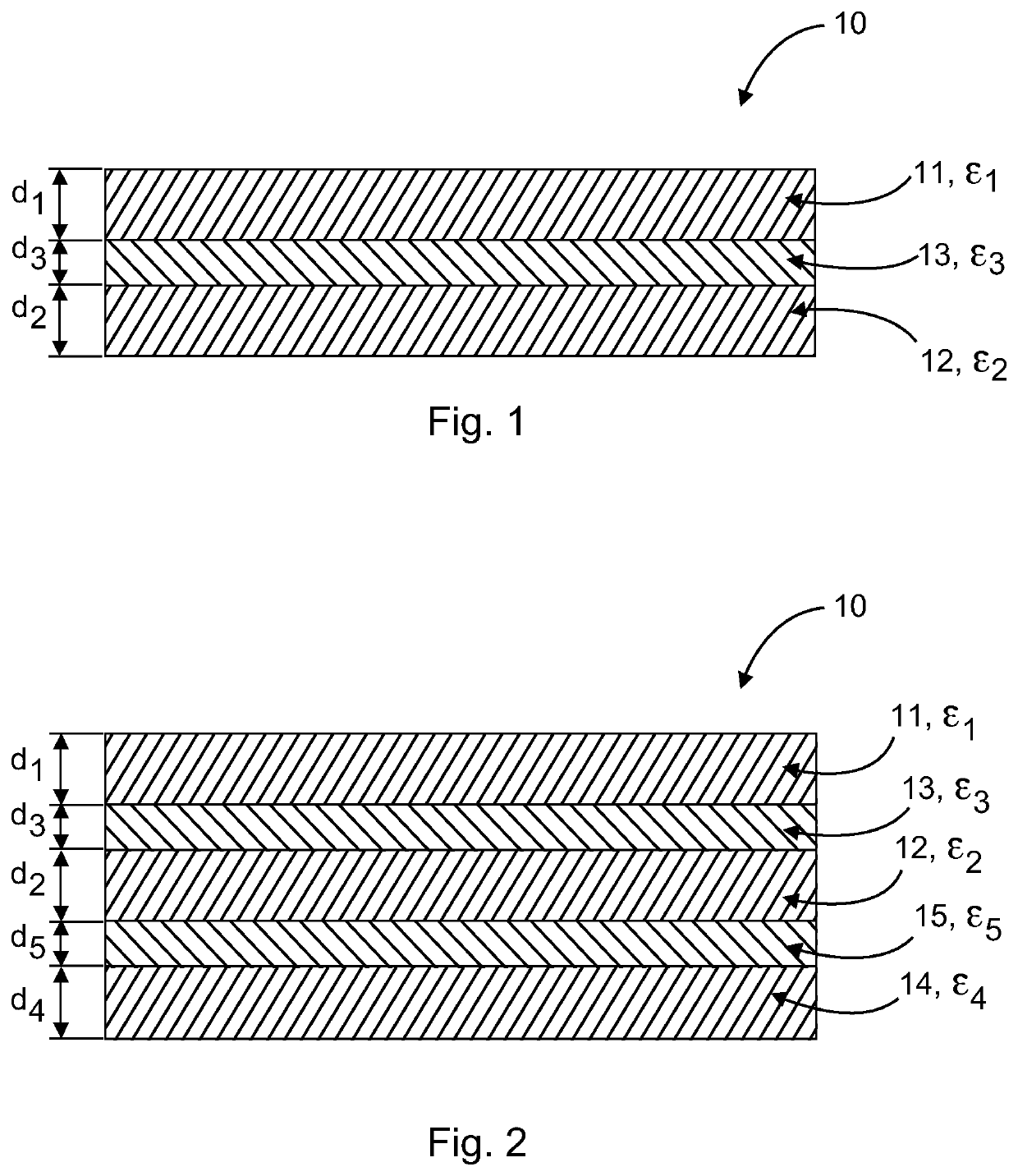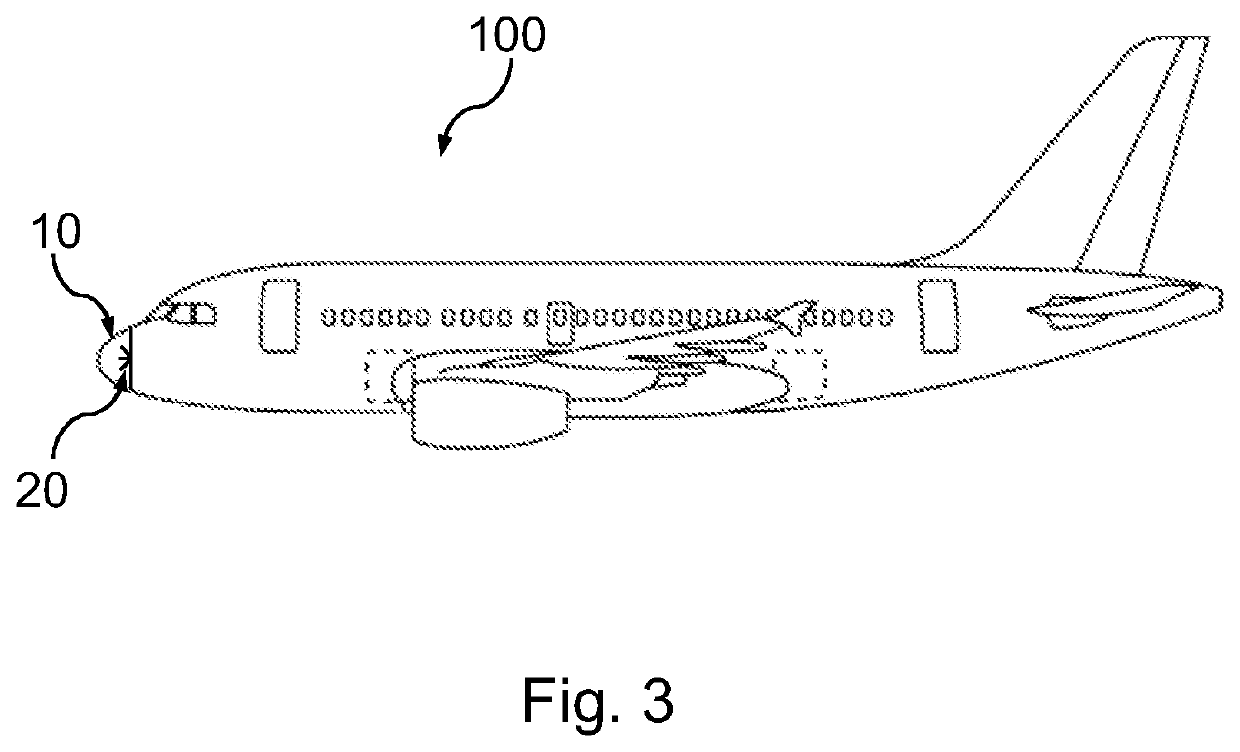Asymmetrically Constructed Radome
a radome and asymmetric technology, applied in the field of radomes, can solve the problems of increasing the difficulty of meeting the requirements of radomes
- Summary
- Abstract
- Description
- Claims
- Application Information
AI Technical Summary
Benefits of technology
Problems solved by technology
Method used
Image
Examples
Embodiment Construction
[0050]FIG. 1 shows a schematic sectional illustration of the layers of an asymmetrical radome 10 according to one exemplary embodiment. The radome 10 has a first layer 11 with a first dielectric constant ε1 and a first layer thickness d1, a second layer 12 with a second dielectric constant ε2 and a second layer thickness d2, and a third layer 13 with a third dielectric constant ε3 and a third layer thickness d3. The third layer 13 is arranged between the first layer 11 and the second layer 12 and connects them to one another.
[0051]The first layer 11 corresponds to the outside of the radome, i.e. in FIG. 3 the side facing away from the antenna 20 and the aircraft 100, and is formed from a thermosetting material, in particular from a cyanate ester resin or an epoxy resin reinforced with short or continuous quartz or glass fibers. As a result, the first layer 11 is mechanically very stable and withstands a bird strike or hail, for example, without being permanently deformed or broken. ...
PUM
| Property | Measurement | Unit |
|---|---|---|
| dielectric constant | aaaaa | aaaaa |
| dielectric constant ε3 | aaaaa | aaaaa |
| dielectric constants ε1 | aaaaa | aaaaa |
Abstract
Description
Claims
Application Information
 Login to View More
Login to View More - R&D
- Intellectual Property
- Life Sciences
- Materials
- Tech Scout
- Unparalleled Data Quality
- Higher Quality Content
- 60% Fewer Hallucinations
Browse by: Latest US Patents, China's latest patents, Technical Efficacy Thesaurus, Application Domain, Technology Topic, Popular Technical Reports.
© 2025 PatSnap. All rights reserved.Legal|Privacy policy|Modern Slavery Act Transparency Statement|Sitemap|About US| Contact US: help@patsnap.com


